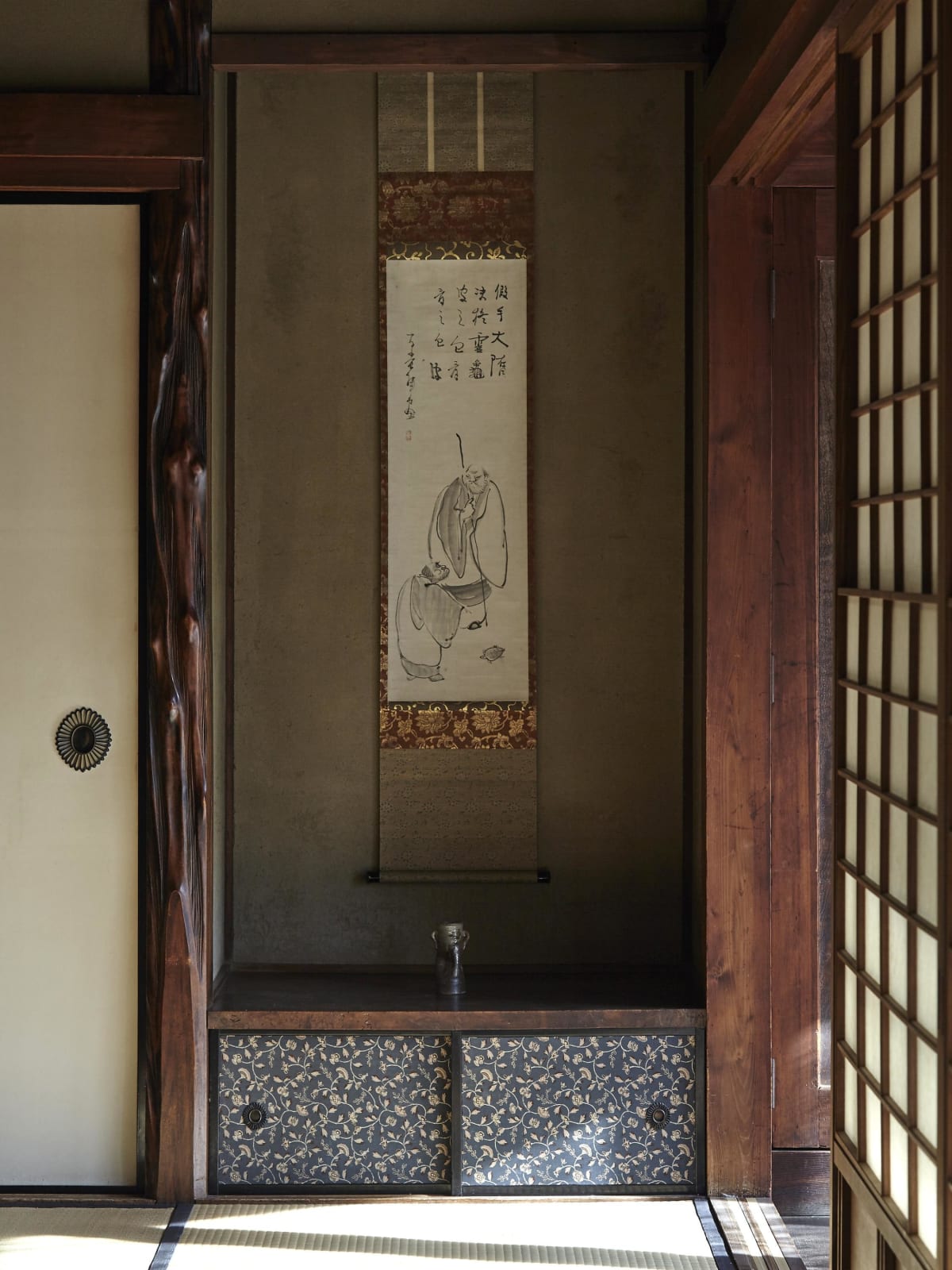Sengai Gibon (1750–1837)
Dasui and a Turtle
Ink on paper, hanging scroll
Inscription by the artist
With authentication by Kohitsu Ryoshin, box authentication by Tetsuzen of Shofuku-ji
Seal: Sengai
88 x 28 cm
189 x 31 cm (overall)
Inscription by the artist
With authentication by Kohitsu Ryoshin, box authentication by Tetsuzen of Shofuku-ji
Seal: Sengai
88 x 28 cm
189 x 31 cm (overall)
Further images
“Dasui and A Turtle” is a Koan raised by the ninth century Chinese Zen Buddhist priest Dasui Fazhen to lead his disciples to the great enlightenment. The narrative goes that a priest points at a turtle and asked Dasui: “All beings cover their bones with flesh and skin. Why does turtle has its flesh and skin covered by bones?” Dasui took a sandal off and placed it over the turtle. The priest could not respond with any word. It is generally understood that this Koan comments on the breaking of the established view, bones being inside of a body in this case, by the existence of turtle. It suggests that one should see through the surface (flesh and skin) so as to get closer to the truth.
In this painting, Sengai Gibon in turn throws a Zen quiz to the views: “To paraphrase Dasui, [I wish] to determine a question about the sacred turtle: are bones covered by flesh and skin? Are flesh and skin covered by bones?” The painting depicts Dasui, holding a cane, is listening to the priest’s question. Their facial features are represented with unrestrained lines, displaying artless yet rich expressions, demonstrating Sengai’s mastery painting techniques.
Sengai Gibon (Zen priest; 1750–1837)
Also know as Hyakudo; Kyohaku.
Mino-born late Edo period Rinzai Zen priest. Gibon is his posthumous designation. Became the chief abbot of Myoshin-ji temple in Kyoto, and the 123th abbot of Shofuku-ji temple in Hakata. Produced a large number of unworldly and graceful works.
In this painting, Sengai Gibon in turn throws a Zen quiz to the views: “To paraphrase Dasui, [I wish] to determine a question about the sacred turtle: are bones covered by flesh and skin? Are flesh and skin covered by bones?” The painting depicts Dasui, holding a cane, is listening to the priest’s question. Their facial features are represented with unrestrained lines, displaying artless yet rich expressions, demonstrating Sengai’s mastery painting techniques.
Sengai Gibon (Zen priest; 1750–1837)
Also know as Hyakudo; Kyohaku.
Mino-born late Edo period Rinzai Zen priest. Gibon is his posthumous designation. Became the chief abbot of Myoshin-ji temple in Kyoto, and the 123th abbot of Shofuku-ji temple in Hakata. Produced a large number of unworldly and graceful works.











